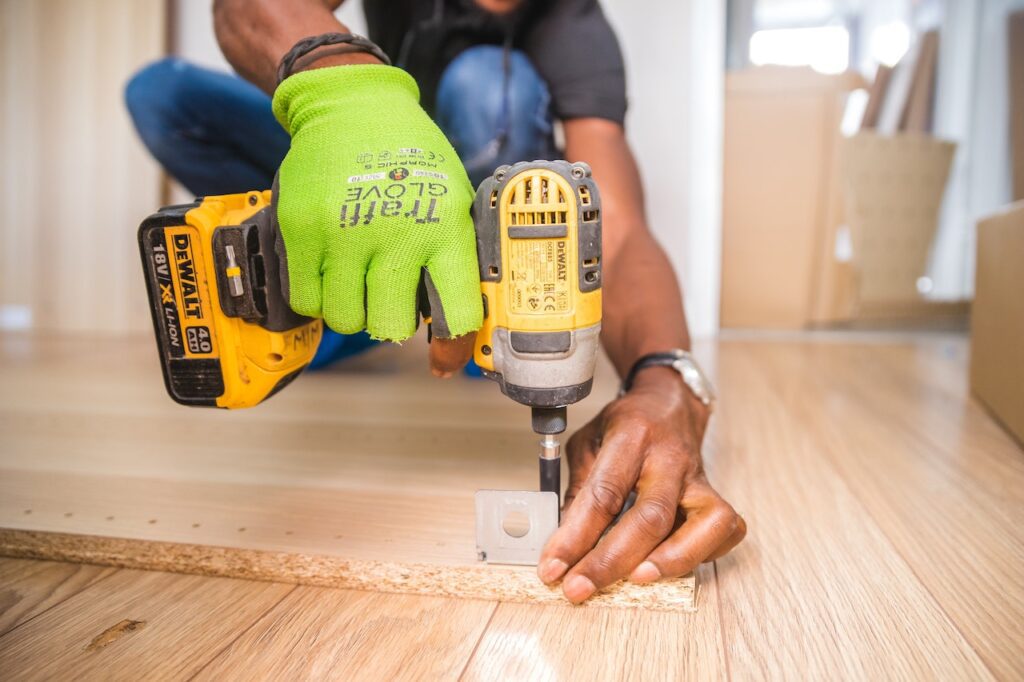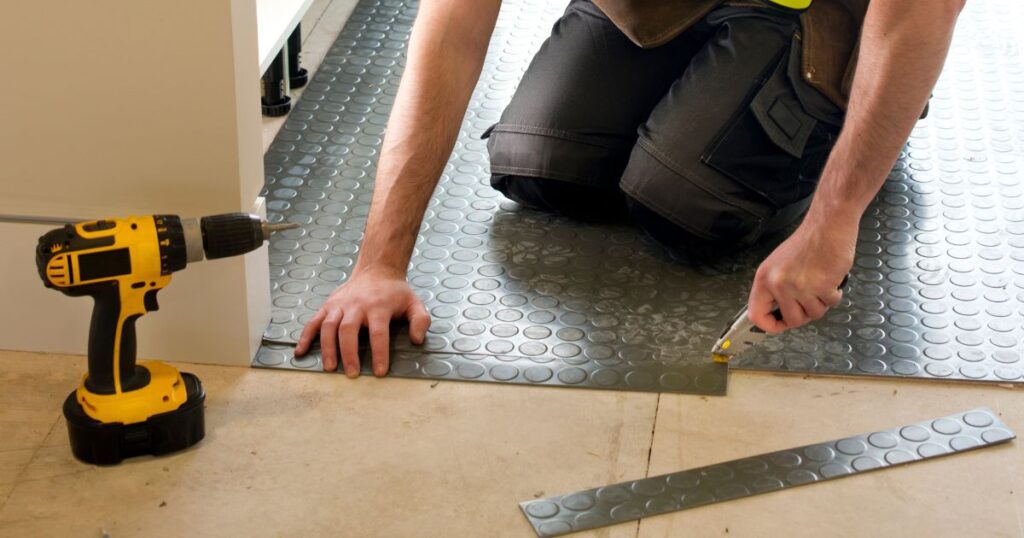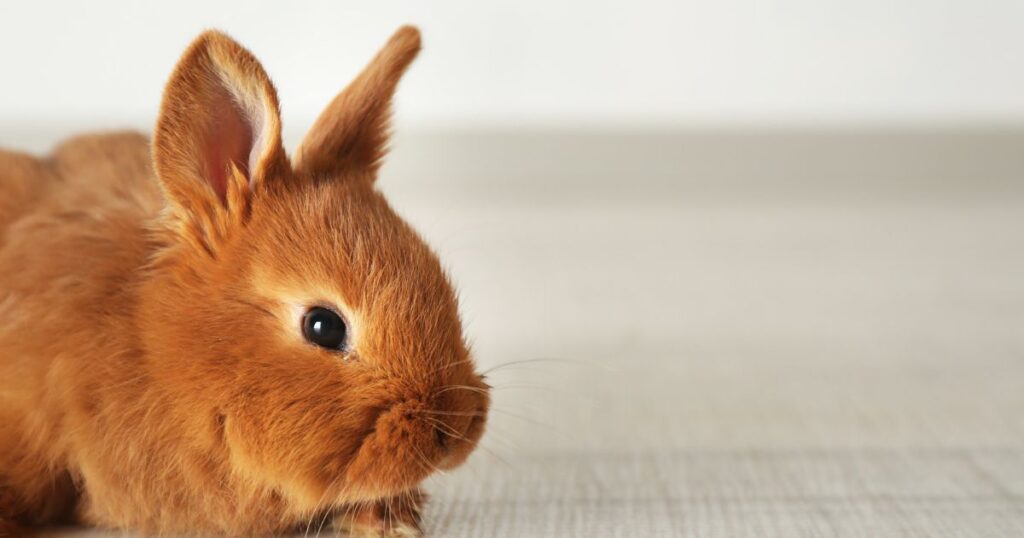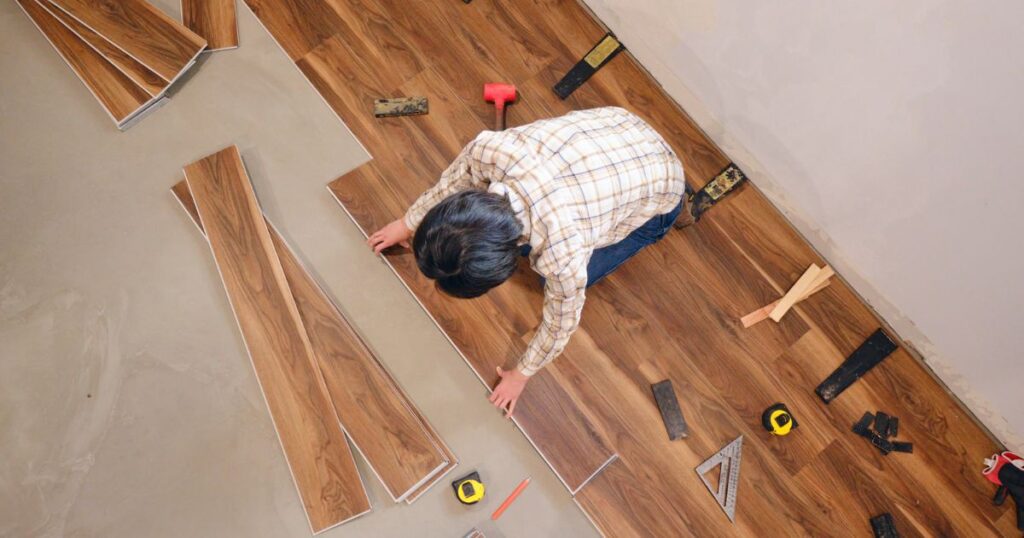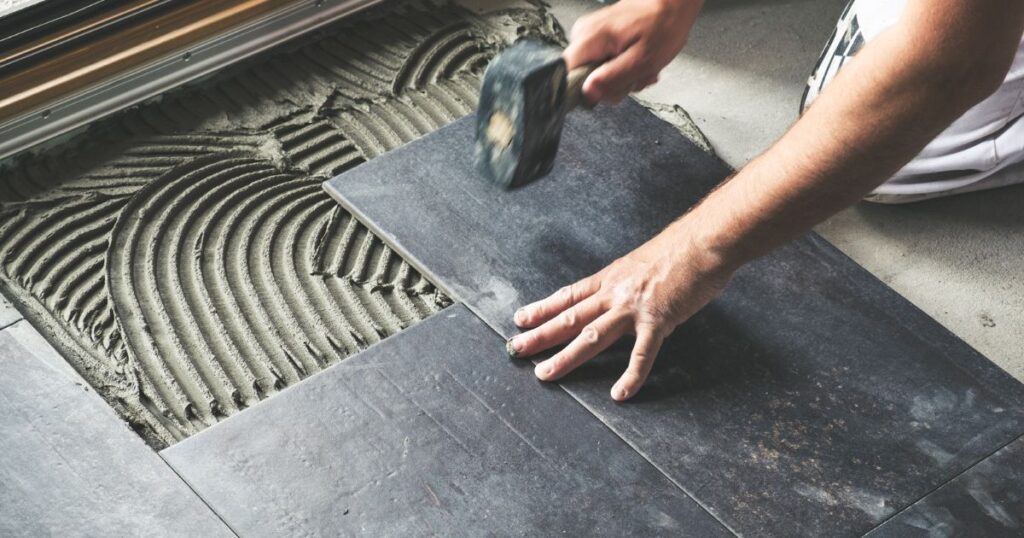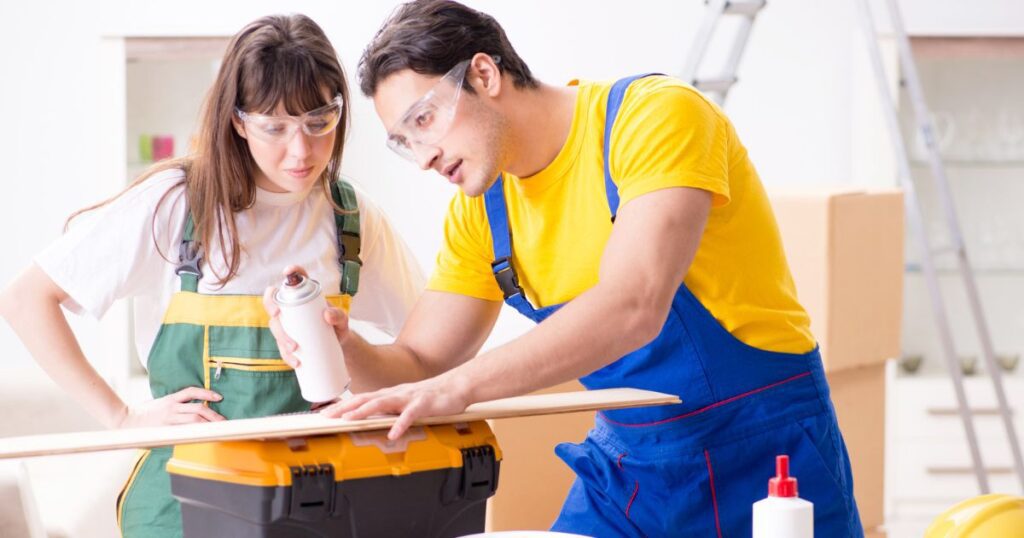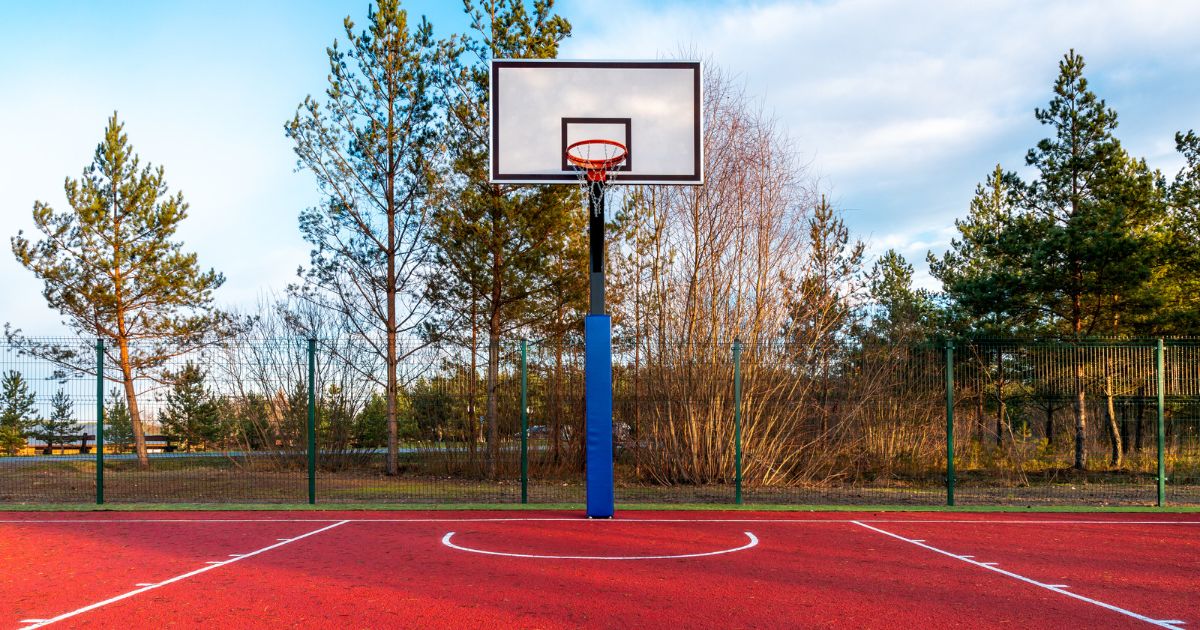
The Importance of Outdoor Basketball Courts
Outdoor basketball courts are a staple of American culture. From urban street corners to suburban driveways, basketball courts provide a space for people of all ages and skill levels to gather, exercise, and have fun. The popularity of basketball is undeniable; it’s not just a sport but a way of life.
Outdoor basketball courts provide an opportunity for players to hone their skills in real-world conditions. Unlike indoor courts with controlled temperature and lighting, outdoor courts are subject to the elements – rain or shine, hot or cold.
This unpredictability makes outdoor play more challenging and exciting. It also means that the court itself must be durable enough to withstand constant use, weathering, and wear and tear.
The Impact of Outdoor Basketball Court Materials
One cannot overstate the importance of the material used in building an outdoor basketball court. The type of material used can impact performance on the court as well as durability over time. The most common materials used for outdoor basketball courts are concrete and asphalt.
While both have their advantages – such as affordability and ease of installation – they also have limitations when it comes to performance on the court. Concrete surfaces can be hard on joints due to their lack of shock absorbency, while asphalt surfaces may not provide enough traction for quick movements.
This is where other materials, such as rubberized surfaces, come into play. Rubberized surfaces offer better shock absorption than concrete or asphalt, which can reduce joint pain during play while also providing improved grip for better performance on the court overall.
RELATED: Flooring for the Golden Years: The Best Options for Senior Safety, Comfort, and Style
The Basics: Concrete vs. Asphalt
When it comes to outdoor basketball court material, the two most common options are concrete and asphalt. Both of these materials have their pros and cons, so let’s dive into each one a bit more.
The Pros of Concrete
Concrete is a popular choice for outdoor basketball courts because it is very durable and long-lasting. It can withstand heavy use without cracking or fading, making it a low-maintenance option.
In addition, concrete offers good traction for players, especially when it has been sealed or coated with an anti-slip finish. Another advantage of concrete is that it can be stamped or stained to create unique designs and patterns.
This can add a personal touch to your basketball court while also making it more visually appealing. And finally, concrete tends to be less expensive than other materials like rubberized surfaces or tile systems.
The Cons of Concrete
Despite its benefits, there are also some downsides to using concrete for an outdoor basketball court. One major disadvantage is that it can be hard on players’ joints due to its lack of shock absorption. This can lead to injuries over time if players aren’t careful.
In addition, if the surface isn’t kept clean and free from debris like leaves or dirt, it can become slippery and dangerous for players. This means that regular maintenance is necessary in order to keep the court safe and playable.
The Pros of Asphalt
Asphalt is another popular choice for outdoor basketball courts due to its affordability compared with other types of surfaces like rubberized systems or tile systems. It also offers decent traction when sealed properly with an anti-slip finish. One advantage of asphalt over concrete is that it provides slightly better shock absorption since it has a bit more give.
This can be important for players who are prone to joint pain or injuries. And finally, asphalt is relatively easy to repair if it does crack or become damaged over time.
The Cons of Asphalt
While asphalt may be a good choice for some, it also has its downsides. One major drawback is that it doesn’t hold up as well to extreme temperatures and weather conditions. For example, if you live in an area with harsh winters, the freeze-thaw cycle can cause the asphalt to crack and deteriorate over time.
Another issue with asphalt is that it tends to fade and lose its color over time due to exposure to sunlight and other elements. This can make your basketball court look worn out and uninviting after a few years.
When choosing between concrete and asphalt for your outdoor basketball court material, there are many factors to consider. While both materials have their pros and cons, ultimately, the decision will come down to your personal preferences, budget, and how much maintenance you’re willing to do in order to keep your court looking and playing its best.
The Game Changer: Rubberized Surfaces
Introducing Rubberized Surfaces for Outdoor Basketball Courts
Rubberized surfaces are the latest craze in outdoor basketball court materials and for good reason. This innovative material is made from recycled rubber tires and provides a better playing experience than traditional concrete or asphalt courts.
The surface has a cushioned texture that absorbs shock, which is especially important for players with joint pain or previous injuries. Not only does the rubberized surface enhance performance and safety, but it’s also eco-friendly.
By using recycled rubber tires, we reduce waste in landfills and give new life to previously discarded material. This makes it an ideal choice for those who want to be environmentally conscious while enjoying their favorite sport.
Rubberized Surfaces Improve Performance and Increase Traction
Rubberized surfaces provide more than just a soft landing – they also improve traction. With their unique texture, they offer a superior grip that allows players to make quick cuts and changes in direction without slipping or sliding on the court.
Additionally, the shock absorption properties of this material reduce fatigue in players’ joints and muscles. The reduced impact means players can play longer without risking injury or soreness.
Players who use rubberized surfaces consistently report that they feel faster and more agile on the court since they don’t need to worry about slipping or sliding during games. It’s clear that this material is a game-changer when it comes to enhancing performance on outdoor basketball courts.
Rubberized Surfaces Give Players an Edge On The Court
It’s no secret that having an edge over your opponent can make all the difference in winning a game of basketball. With its improved traction and shock absorption properties, rubberized surfaces can give you just that edge.
Players who train regularly on these surfaces develop stronger muscles due to the increased resistance from the cushioned texture. Additionally, the reduced impact on joints and muscles means players can push themselves harder and play more aggressively without risking injury.
So if you’re serious about your game, it’s time to invest in a rubberized outdoor basketball court. Not only will it provide a better playing experience, but it will also give you a competitive advantage over your opponents.
Niche Options: Tile Systems and Synthetic Turf
Customizable Designs and Easy Installation: Tile Systems
Who says basketball courts have to be boring? With tile systems, you can design a court that reflects your personality and unique style.
These systems offer endless customization options with various colors, patterns, and even logos. Imagine playing on a court with your favorite sports team’s logo or a vibrant mosaic design.
The possibilities are endless! Not only do tile systems provide a customizable aesthetic, but they also offer easy installation.
Forget about the hassle of pouring concrete or laying asphalt; tile systems can be installed over existing surfaces or on top of a base material such as gravel or sand. Plus, if one tile is damaged, it can be easily replaced without having to redo the entire court.
The Cushioned Alternative: Synthetic Turf
When you think of synthetic turf, you might imagine football fields or soccer pitches. But did you know that it can also make for an excellent basketball court surface? Synthetic turf provides cushioning that reduces the impact on joints and muscles during play.
This cushioning also improves traction for players, reducing the risk of slips and falls. Synthetic turf courts are low-maintenance compared to traditional materials like concrete or asphalt as they require no sealing or resurfacing.
They are weather-resistant, which means they don’t get damaged by extreme temperatures, unlike other surfaces like concrete, which tend to develop cracks when exposed to harsh winter conditions. Synthetic turf is also eco-friendly as it eliminates the need for fertilizer, pesticides, and water usage required for real grass.
Maintenance Matters: Tips for Keeping Your Court in Top Shape
Maintaining an outdoor basketball court is crucial for its longevity and performance quality over time, regardless of the material used. Here are some tips:
– Clean regularly: Sweep away debris such as leaves and dirt daily to prevent buildup. Power wash the court every few months to remove any stubborn stains or dirt.
– Seal cracks: Cracks in concrete or asphalt can worsen over time, so it’s important to seal them promptly to prevent further damage. – Resurface when necessary: Over time, outdoor basketball courts can incur wear and tear from constant use.
Resurfacing can help restore the surface and improve its performance. Take care of your outdoor basketball court, and it will take care of you by providing a safe, high-quality playing experience for years to come.
Maintenance Matters: Tips for Keeping Your Court in Top Shape
Cleanliness is Next to Godliness
When it comes to outdoor basketball courts, cleanliness is key. Dirt, debris, and leaves can cause a slipping hazard while also staining the court.
To stay on top of this problem, regular cleaning is essential. Use a broom or leaf blower to clear the surface of any debris after each use.
This will prevent dirt buildup and help maintain the court’s traction. For more thorough cleanings, consider using a pressure washer with a mild detergent solution.
Sealing Cracks – The Make or Break Task
One of the biggest threats to an outdoor basketball court’s longevity is cracks. Over time, weathering can cause small cracks in the surface, which can become bigger over time.
If left untreated, these cracks can cause serious damage to the court’s structural integrity. Luckily, sealing any cracks as soon as they appear can help prevent further damage and prolong your court’s life.
To seal cracks effectively, you will need to first clean them out thoroughly with an air compressor or wire brush. Once you have removed all debris from the crack, fill it with a high-quality crack filler designed for your specific material type.
RELATED: From Grass to Mats: Choosing the Perfect Flooring for Your Rabbit’s Home
Resurfacing When Necessary – Don’t be Afraid!
No matter how much effort we put into maintaining our outdoor basketball courts, there will inevitably come a point when resurfacing is necessary. While resurfacing may seem like a daunting task that requires professional help; it doesn’t have to be! Resurfacing your basketball court yourself will save you money and give you complete control over its final appearance.
Before starting resurfacing work, though, make sure that you have thoroughly cleaned your surface as described in our cleaning section above. If you are unsure about what type of material would be best for your specific court, reach out to a professional or manufacturer to see what they recommend.
Maintaining your outdoor basketball court is not only important for its longevity but also for the safety and performance of the players using it. Regular cleaning, crack sealing, and resurfacing when necessary are key tasks that should be included in any maintenance plan. By following these tips, you can ensure that your basketball court remains in top shape and provides an excellent playing experience for years to come.
Frequently Asked Questions
What is the best material for outdoor basketball courts?
The best material for outdoor basketball courts is typically a combination of acrylic or polyurethane coatings applied over a concrete or asphalt base. This provides a durable, all-weather surface that offers good traction and ball bounce.
What materials are used for basketball courts?
Basketball courts are commonly constructed using materials such as concrete, asphalt, or sports tiles as the base surface. The top surface is often made of materials like acrylic, polyurethane, or rubber coatings that provide the desired playing characteristics.
What is the best surface for an outdoor court?
The best surface for an outdoor court depends on various factors such as budget, climate, and intended use. Concrete, asphalt, or sports tiles with acrylic or polyurethane coatings are popular choices due to their durability, weather resistance, and ability to provide consistent ball bounce.
What kind of floor is used on a basketball court?
Basketball courts typically use hardwood flooring, specifically maple, as the preferred surface due to its shock absorption, ball bounce, and player-friendly properties. However, hardwood is more commonly used for indoor courts.
Which is a suitable type of surface for an outdoor basketball court?
A suitable type of surface for an outdoor basketball court can include concrete, asphalt, or sports tiles with acrylic or polyurethane coatings. These materials offer durability, weather resistance, and the ability to provide a consistent playing experience.
What surface is best for basketball?
The best surface for basketball depends on the specific requirements and preferences of the players. However, surfaces like concrete, asphalt, or sports tiles with appropriate coatings are commonly used outdoors to provide good traction, ball bounce, and player safety.
Conclusion
After exploring the various outdoor basketball court materials, it’s clear that choosing the right one is crucial for optimal performance and longevity. Concrete and asphalt may be the most common options, but they come with their own set of drawbacks.
Concrete is prone to cracking and can be hard on joints, while asphalt can become slippery when wet. However, rubberized surfaces are a game-changer for outdoor basketball courts.
These surfaces provide better shock absorption and increased traction, allowing players to perform at their best without worrying about injuries or slipping. While they may be more expensive than concrete or asphalt up front, their durability makes them a smart long-term investment.
Tile systems and synthetic turf offer even more unique options for outdoor basketball courts. Tile systems allow for customizable designs and easy installation, while synthetic turf provides a cushioned playing surface that can add an extra layer of excitement to the game.
Regardless of which material is chosen, maintenance is key to prolonging the life of an outdoor basketball court. Regular cleaning to remove debris and sealing cracks as soon as they appear can help prevent costly repairs down the line.
Selecting the right material for an outdoor basketball court is essential for optimal performance and longevity. While each option has its pros and cons, rubberized surfaces are clearly superior in terms of safety and performance.
Whether it’s concrete or asphalt, tile systems, or synthetic turf – maintaining the court regularly will ensure many years of enjoyable playtime on a high-quality surface. So go ahead – get your sneakers laced up tight and hit that court!

